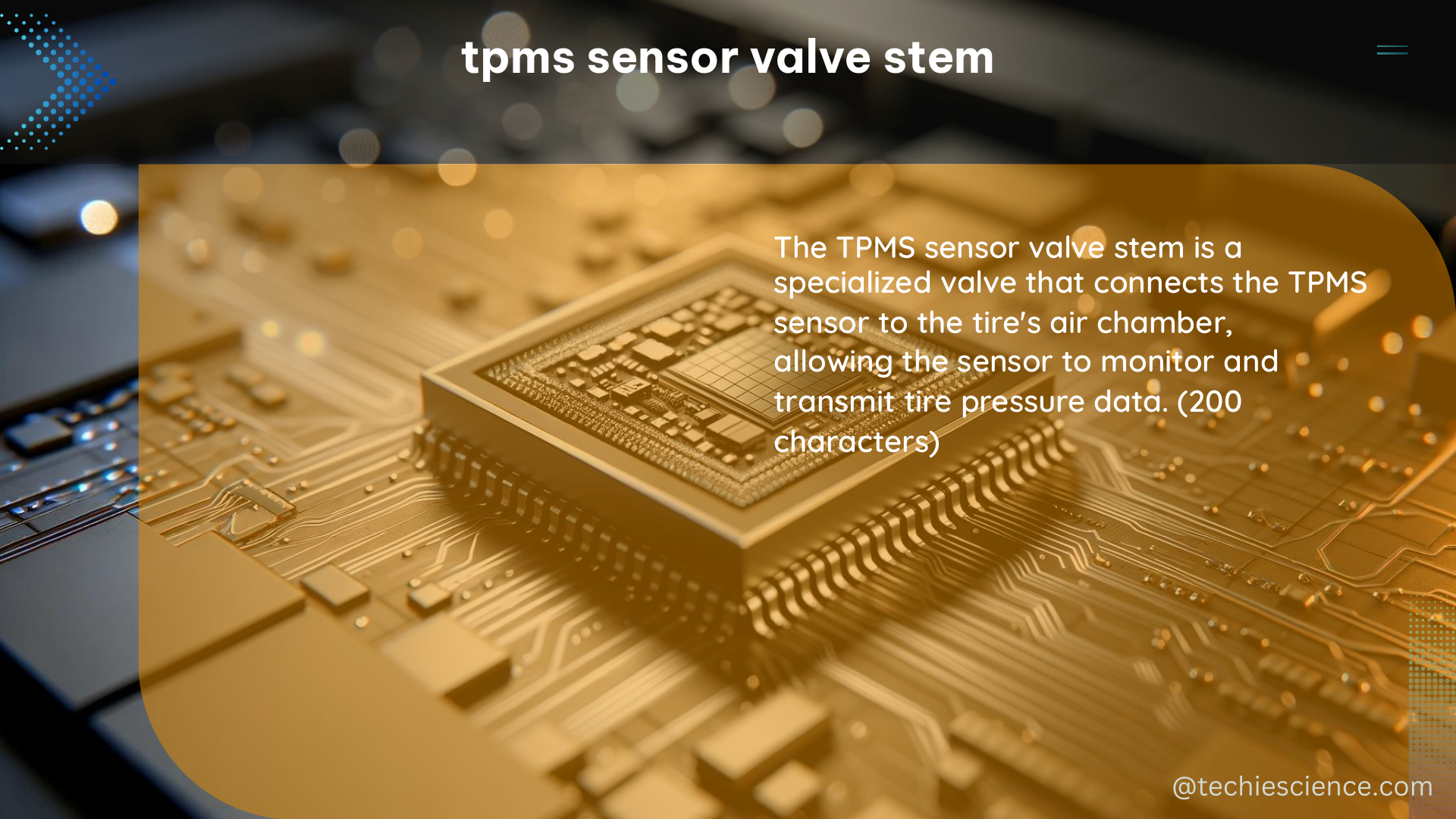The TPMS (Tire Pressure Monitoring System) sensor valve stem is a crucial component of modern vehicles, designed to monitor and alert drivers to potential problems with their tires. These innovative devices detect low tire pressure or TPMS malfunction, ensuring optimal tire service and safety.
Understanding the TPMS Sensor Valve Stem
The TPMS sensor is typically found within the tire itself, mounted on the wheel assembly. These sensors relay crucial information to the vehicle’s computer, triggering the TPMS light when a discrepancy is detected. In most cases, they are attached to the valve stem or banded to the wheel inside the tire.
Types of TPMS Systems
There are two main types of TPMS: Direct TPMS and Indirect TPMS.
Direct TPMS
Direct TPMS utilizes sensors situated inside each wheel to accurately measure individual tire pressure. These sensors constantly monitor and relay data to the vehicle’s onboard computer, which alerts the driver if the pressure in any tire falls below the manufacturer’s recommended level.
Direct TPMS sensors are powered by a battery and typically have a lifespan of 5-10 years, depending on usage and environmental factors. They communicate with the vehicle’s computer using radio frequency (RF) signals, which are received by an antenna located near the wheel well.
The advantages of direct TPMS include:
– Accurate tire pressure monitoring
– Ability to detect slow leaks or gradual pressure loss
– Customizable pressure thresholds for individual tires
Indirect TPMS
Indirect TPMS, on the other hand, does not rely on wheel-mounted sensors. Instead, they use the vehicle’s existing wheel speed sensors, part of the Anti-lock Braking System (ABS), to detect discrepancies in rotational speed among the tires. This system is more cost-effective and maintenance-friendly, but it may not provide as precise pressure readings as direct TPMS.
Indirect TPMS systems work by monitoring the wheel speed sensors and detecting any differences in rotational speed between the tires. This difference in speed is then used to estimate the tire pressure, as underinflated tires will have a slightly higher rotational speed compared to properly inflated tires.
The advantages of indirect TPMS include:
– Lower cost of implementation
– No need for battery-powered sensors
– Reduced maintenance requirements
TPMS Sensor Communication
TPMS sensors communicate with your car using wireless technology, such as RF signals, to transmit the collected data. When a tire’s pressure drops below the recommended threshold, the TPMS sensors transmit a signal to the vehicle’s computer, which then triggers a low tire pressure warning. This alert allows drivers to address the issue promptly and maintain proper tire pressure, enhancing vehicle safety and efficiency.
The TPMS sensor’s RF signal is typically transmitted at a frequency of 315 MHz or 433 MHz, depending on the vehicle’s make and model. The signal strength and range can vary, but generally, the sensors can communicate with the vehicle’s computer from a distance of up to 30 feet (9 meters).
TPMS Sensor Valve Stem Installation and Torque Specifications

When it comes to torque specifications for the TPMS and valve stem assembly, the exact values may vary depending on the vehicle make and model. However, as a general guideline, the torque spec for bolt (a) (stem to TPMS assembly) is typically around 10-15 Nm, while nut (e) (stem to the wheel assembly) is around 80-100 Nm.
It is essential to consult the vehicle’s shop manual or a reliable online resource for the specific torque specifications for your vehicle. Proper torque application is crucial to ensure the TPMS sensor valve stem is securely installed and functioning correctly.
TPMS Sensor Valve Stem Components
The TPMS sensor valve stem assembly typically consists of the following components:
| Component | Description |
|---|---|
| (a) Bolt | Secures the TPMS sensor to the valve stem |
| (b) TPMS Sensor | Measures and transmits tire pressure data |
| (c) Valve Stem | Allows air to be added or released from the tire |
| (d) Rubber Grommet | Seals the valve stem to the wheel |
| (e) Nut | Secures the valve stem to the wheel |
Proper installation and maintenance of these components are essential for the TPMS system to function correctly and provide accurate tire pressure readings.
Conclusion
TPMS sensor valve stems are vital components of modern vehicles, ensuring optimal tire pressure and enhancing vehicle safety. Understanding their location, types, and communication methods can help drivers maintain their vehicles’ tire health and ensure a safe and efficient journey throughout.
By following the guidelines and specifications outlined in this comprehensive guide, you can ensure your TPMS sensor valve stem is properly installed and functioning as intended, providing you with the necessary information to keep your tires in top condition.
References:
– Can You Tell if a TPMS is Installed by the Valve Stem?
– Normal Valve Stems in a TPMS Wheel
– TPMS Sensor Install Questions
– How Do Tire Pressure Sensors Work?
– TPMS Valve Stem Assembly Question

The lambdageeks.com Core SME Team is a group of experienced subject matter experts from diverse scientific and technical fields including Physics, Chemistry, Technology,Electronics & Electrical Engineering, Automotive, Mechanical Engineering. Our team collaborates to create high-quality, well-researched articles on a wide range of science and technology topics for the lambdageeks.com website.
All Our Senior SME are having more than 7 Years of experience in the respective fields . They are either Working Industry Professionals or assocaited With different Universities. Refer Our Authors Page to get to know About our Core SMEs.